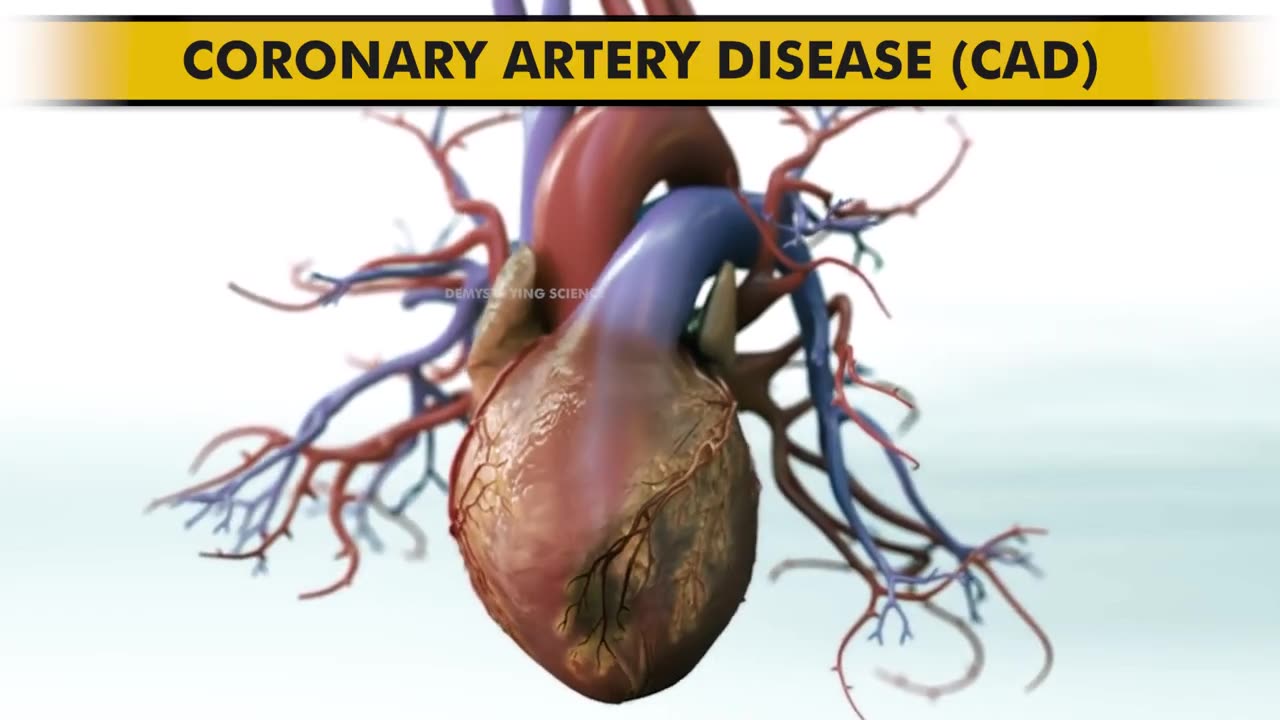Premium Only Content

How Angioplasty Procedure is performed?
In the term angioplasty, “angio” means blood vessel, and “plasty” is
opening up.
An angioplasty is a surgical procedure to open the blood vessels that
supply blood to your heart muscle. These blood vessels are known as
coronary arteries.
Angioplasty is a conventional treatment for coronary artery disease (CAD)
and heart attacks.
In these conditions, there is a buildup of plaque, or atherosclerosis, on the
walls of the arteries. As plaque accumulates, the arteries narrow and can
become blocked.
In a heart attack, the plaque may rupture, leading to a clot that stops blood
flow.
Doctors perform more than 1.8 million angioplasties a year in the United
States, according to the American College of Cardiology.
Let us see how angioplasty is performed
Before beginning angioplasty, a healthcare professional will clean and
numb the area where the catheter enters the body, usually the groin but
sometimes the wrist.
Next, a doctor inserts the catheter into the artery and directs it towards the
coronary artery, watching its progress on an X-ray feed.
Once the catheter is in position, the doctor injects a contrast dye through
the artery, which helps identify blockages around the heart. This process is
called angiography. Once they locate the blockages, the doctor inserts a
second catheter and a guidewire, usually with a balloon at the tip.
When the second catheter is in position, the doctor inflates the balloon by
which the fatty deposits, or plaque, get pushed against the wall of the
artery. This clears the way for blood flow.
In some cases, the catheter is also equipped with a stainless steel mesh
called a stent.
Most people who have an angioplasty also have a stent placed in their
blocked artery during the same procedure. A stent, which looks like a tiny
coil of wire mesh, supports the walls of your artery and helps prevent it
from re-narrowing after the angioplasty.
Here's what happens during a stent placement:
The stent, which is collapsed around a balloon at the tip of the
catheter, is guided through the artery to the blockage.
At the blockage, the balloon is inflated and the spring-like stent
expands and locks into place inside the artery.
The stent stays in the artery permanently to hold it open and improve
blood flow to your heart. In some cases, more than one stent may be
needed to open a blockage.
Once the stent is in place, the balloon catheter is deflated and
removed.
More X-ray images (angiograms) are taken to see how well blood flows
through your newly widened artery.
Most stents implanted during an angioplasty are drug coated. The
medication in the stent is slowly released to help prevent future plaque
buildup and the re-narrowing of the blood vessel.
Recovery
When angioplasty is completed, the cardiologist removes the catheters and
bandages.
#Angioplasty
#Angiography
-
 3:59:45
3:59:45
Bitcoin Sports Network
10 hours agoMax & Stacy Invitational Day 2 Part 1 - LIVE from El Salvador
132K11 -
 1:34:30
1:34:30
The Criminal Connection Podcast
5 days ago $2.48 earnedEL PACO: Gypsy Family Wars, Bare Knuckle Boxing, Assassinations and Spirits!
61.3K4 -
 51:43
51:43
Brewzle
1 day agoI Found Some AWESOME Stores Bourbon Hunting in Des Moines, IA
52K3 -
 1:16:54
1:16:54
Kyle Rittenhouse Presents: Tactically Inappropriate
1 day ago $3.74 earnedReplacing Matt Gaetz Pt. 2
34.1K15 -
 16:08
16:08
inspirePlay
1 day ago $0.90 earnedCan You Sniff Out the Golf Imposters Before They Wreck the Score?
26.3K4 -
 22:57
22:57
RTT: Guns & Gear
1 day ago $4.98 earnedPSA Dagger vs. Bear Creek Arsenal BC-102 | The Better Pistol For The Poors
50.6K11 -
 8:28
8:28
MichaelBisping
11 hours agoBISPING: "Islam WILL RETIRE after UFC 311!?" | Makhachev Wants Belal or Shavkat at WELTERWEIGHT
31.3K5 -
 1:13:55
1:13:55
Eye of the STORM
4 months agoEye of the STORM Podcast S2 E3 08/19/24 with Sam Anthony
23K2 -
 1:04:22
1:04:22
PMG
8 hours ago $0.52 earned"Your Marriage Can Be Saved with Art Thomas"
18.2K3 -
 59:14
59:14
Tactical Advisor
11 hours agoNew Gun Build / Fires update | Vault Room Live Stream 013
46.8K10